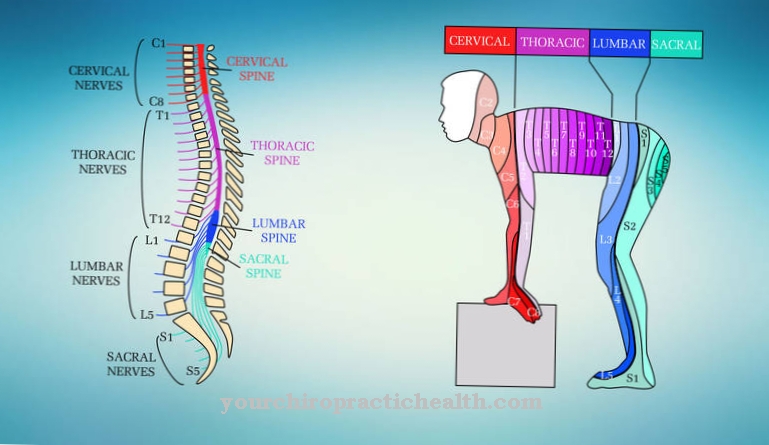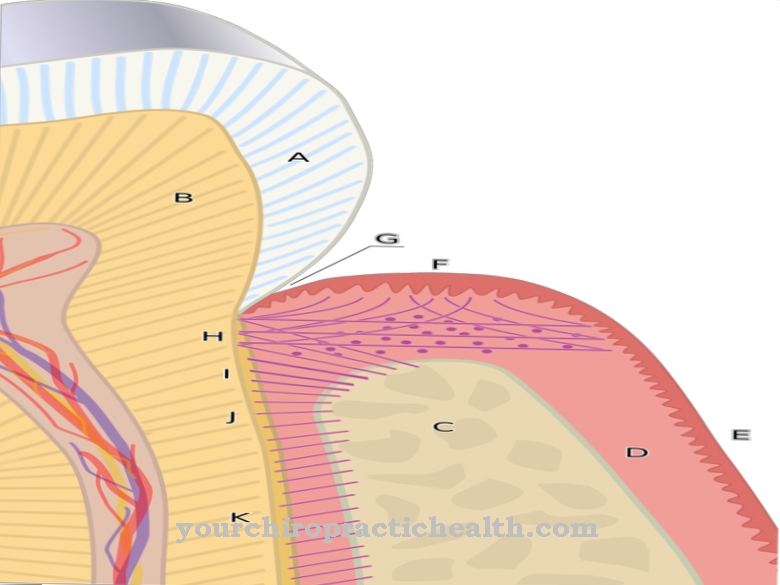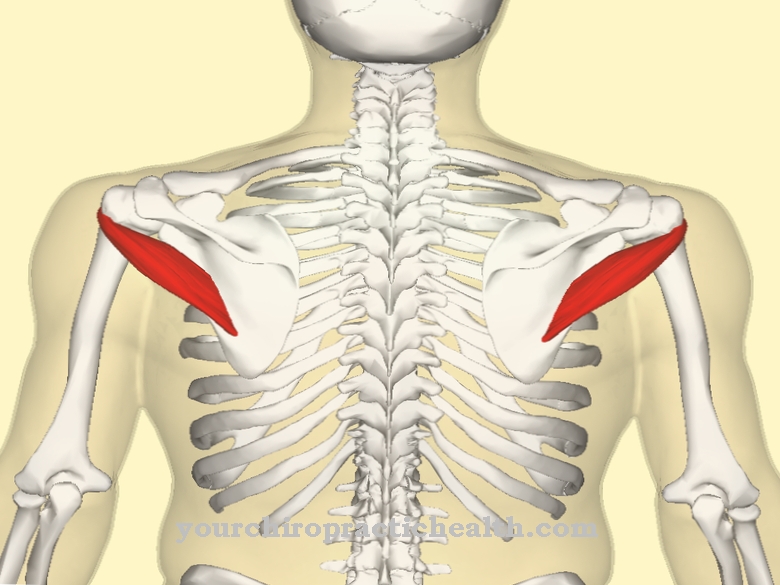The Gastric mucosa is the protective mantle of the stomach. Your cells, which produce mucus, enzymes and stomach acid, make a major contribution to the smooth running of digestion.
What is the lining of the stomach?
In the Gastric mucosa is the reddish-gray to pinkish-colored mucous membrane that lines the inside of the stomach. The thick lining of the stomach protects the stomach wall from stomach acid.
Stomach acid is a strong acid with a fasted pH between 1 and 1.5. This means that without the protective gastric mucosa, the gastric tissue would be severely damaged by the gastric acid. Without this thick layer of mucous membrane, the stomach would digest itself. The gastric mucosa is responsible for the production of gastric juice.
It is an essential fluid for digestion, which in addition to stomach acid also contains mucus and various enzymes such as pepsin. Pepsin is an enzyme that breaks down proteins ingested through food.
Anatomy & structure
Depending on how full the stomach is, the Gastric mucosa more or less wrinkled. On an empty stomach, these elongated folds are very extensive.
The longitudinal folds converge at the stomach gate. This regulates the transport of food into the duodenum and is closed when at rest. The depressions in the gastric mucosa caused by the wrinkles are also known as gastric passages. Liquids can quickly pass through the stomach using these gastric routes.
The stomach lining is made up of three main layers. The mucosal epithelium contains cells that produce mucus and stomach acid. Directly on top of the epithelial layer is a layer of connective tissue, the lamina propria, also called its own layer. The self-layer has a large number of glands.
This is followed by a layer of muscle made up of smooth muscle cells. This layer leads to a contraction or regulation of the fold relief in the stomach.
Function & tasks
The function of the Gastric mucosa depends on the location within the stomach. In the area of the stomach entrance there are more cells that produce mucus. In addition, lysozyme is produced, which is helpful in the defense against pathogens.
The cells in the main part of the stomach are responsible for most of the gastric acid production. The acidic environment in the stomach also kills many pathogens and so cannot cause any damage to the body. The cells and glands in the stomach lining are protected from the destructive effects of hydrochloric acid in the stomach by the thick layer of mucus. In the area of the gastric outlet there are again more mucus-producing cells so that the processed food pulp reaches the duodenum in a less acidic manner.
A basic distinction is made between three different cell types that are responsible for the function of the gastric mucosa. The parietal cells produce gastric acid and intrinsic factor; this is a protein that enables the absorption of cobalamin (vitamin B12). Enzymes such as pepsinogen, a precursor to pepsin, are produced in the main cells.
In addition to these protein-splitting enzymes, enzymes that split fat are also formed here. The adjoining cells are mainly responsible for the production of mucus, which protects the wall of the stomach from stomach acid.
Illnesses & ailments
The majority of people experience gastric mucosal inflammation, i.e. gastritis, at least once in their lives. Depending on the severity of the inflammation, the entire stomach lining may be affected or only smaller areas.
There is inflammation of the Gastric mucosaif the balance between the gastric mucosa protecting and gastric mucosal damaging factors gets mixed up in the physiological state. If the adjoining cells are prevented from producing sufficient mucus for any reason, the stomach wall is no longer adequately protected from the hydrochloric acid in the gastric juice, which causes damage to the deeper layers of the stomach and, as a result, an inflammatory reaction.
There are many possible causes for this process. The most common are excessive alcohol consumption and smoking. Both of these damage the lining of the stomach. Taking medication, such as pain relievers, can also cause stomach problems. The best-known drugs that damage the gastric mucosa include acetylsalicylic acid in Aspirin® and diclofenac in Voltaren®.
In bacterial food poisoning, the toxins produced by the bacteria damage the lining of the stomach, causing diarrhea and vomiting.












.jpg)



.jpg)










.jpg)
